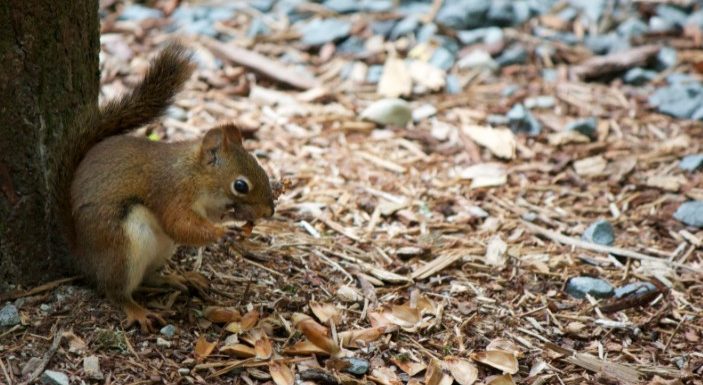
Let’s answer the question How to Control Squirrels. Squirrels are among the most acrobatic members of the animal kingdom—which also makes them one of the most difficult animals to control.
Most squirrels are only a nuisance, but some do structural damage, such as stripping house insulation to build nests, nesting in attics, eating nuts and other crops, and damaging trees.
Table of Contents
Signs of a Squirrel Problem
Many homeowners begin to see squirrels as a nuisance after seeing them damage a bird feeder, a stash of birdseed, or garden plants. Hungry or curious squirrels commonly eat young plants, bulbs, and seedlings—although field mice often do similar damage, so confirm that squirrels are actually the problem before you label them the problem.
Traps and Habitat Modification
- Live traps: Traps are your second-best line of defense against a growing squirrel population. Havahart® makes reliable, easy-to-use live traps. Squirrels love sunflower seeds, so try those first as bait.
- Brush cleanup: A good way to end a squirrel intrusion into your home is to cut away all trees, bushes, and branches that are eight feet or closer to your home. Squirrels do not climb up the side of a house, preferring their usual branch-to-branch means of travel.
Chemical Control

- Poisons: Avoid using squirrel poison—many animals prey on squirrels, and if one of those animals eats a poisoned squirrel, it too can be poisoned in turn.
- Nontoxic repellents: Havahart’s Critter Ridder® is a nontoxic substance that you can spray or spread on areas that you want squirrels to avoid. Although the substance is irritating to squirrels, it is not 100% effective, as squirrels can be very persistent.
Keeping Squirrels Away
- Trash storage: Keep tight lids on any containers that are filled with birdseed. Steel garbage cans with tightly fitted metal lids are your best bet.
- Bird feeders: Dome-shaped bird feeders hung on a tight wire from one tree to another are often effective at keeping squirrels away from your birdseed. Even if a squirrel makes it across the wire, it will usually slide off the plastic dome once it’s reached the feeder.
- Grease: To make it more difficult for squirrels to traverse wires or other areas, you can coat the areas with grease. You might also want to try adhesive products made by Tanglefoot®—though none of these products are actually labeled for use against squirrels, the products’ stickiness seems to really bother them.
- Plastic tubing: If squirrels are making their way to your home across power lines, you may want to have a representative from your power company come to your house and split 2–3 feet of plastic tubing (about 3–4″ in diameter) and then place it over the cables. When the squirrel tries to go across, the tube will rotate, causing the squirrel to lose its balance and fall.
- Pellet guns: If you’re at your wit’s end and have tried every other option, CO2 pellet guns usually are effective in controlling squirrels. Check your local ordinances for restrictions, and be very careful using a pellet gun. This should be considered an absolute last resort.


